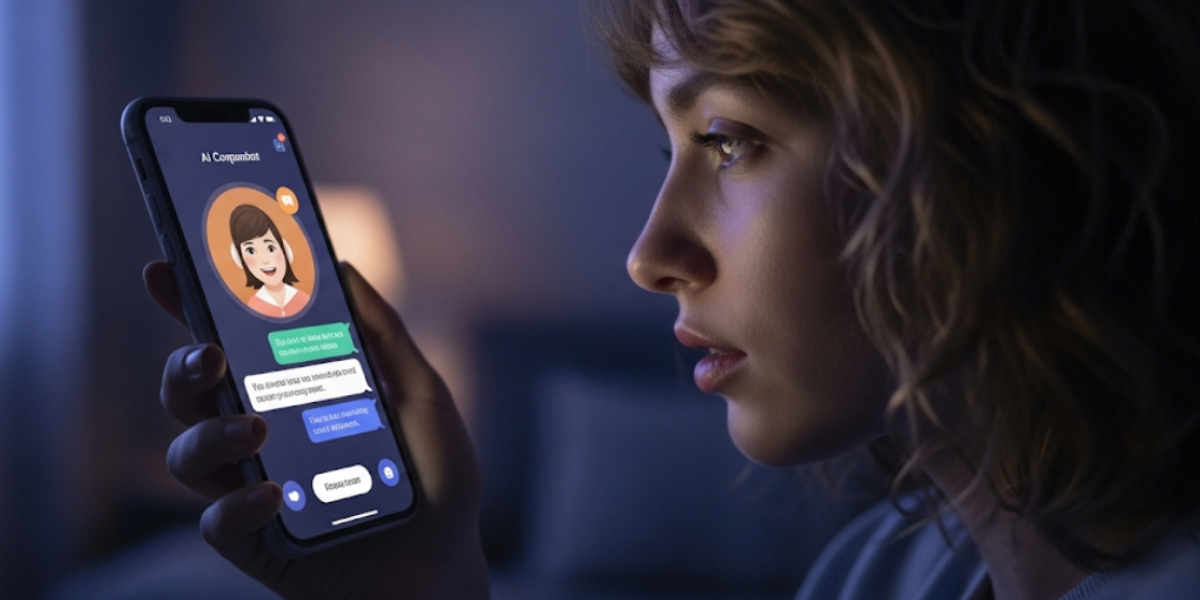People today face more options for companionship than ever before. From chatbots that listen without judgment to virtual avatars that share daily routines, AI companions have stepped into roles once filled by living beings. As a result, some individuals pick these digital alternatives instead of committing to pets or starting families. This shift raises questions about daily life, emotions, and broader society. So, what exactly unfolds when someone swaps the mess of a puppy or the demands of parenthood for a screen-based friend?
Many factors drive this decision. Rising living costs make traditional choices like owning a dog or having kids seem daunting. Pets require food, vet visits, and space, while children bring even steeper expenses in education and care. AI companions, however, come with minimal upkeep—just a subscription or app download. They fit neatly into busy schedules, offering interaction without the chaos of fur shedding or late-night feedings. Consequently, for those in small apartments or with demanding jobs, a virtual buddy appears practical.
Still, this preference doesn't happen in isolation. Reports show that around a quarter of users experience positive changes from AI interactions, such as better stress management. Despite these benefits, deeper effects emerge over time.
The Draw of Always-Available Friends in a Busy World
AI companions shine in their constant presence. Unlike a cat that might ignore you or a child who needs sleep, these systems respond instantly. They remember past talks, adapt to preferences, and even simulate empathy. For instance, apps like Replika allow users to build ongoing relationships, where the AI learns from conversations to become more attuned. In parallel, the rise of the NSFW AI influencer shows how personalization can extend into adult-oriented companionship and digital intimacy. AI companions provide emotional personalized conversations tailored to individual moods and histories.
In comparison to real pets, AI versions avoid allergies, cleanup, or travel hassles. Robotic pets, powered by AI, mimic behaviors like wagging tails or purring, but without the unpredictability. Likewise, when stacked against raising children, AI skips the financial strain— no diapers, schools, or college funds. Hence, for singles or couples delaying milestones, this choice feels liberating.
But not everyone sees it as progress. Public discussions highlight worries that such tools pull people away from real connections. One observer noted how AI might desensitize users to rejection, making human interactions seem too risky. Even though these companions boost short-term mood, they might foster dependency.
- Convenience tops the list: No feeding schedules or walks needed.
- Customization appeals: Users shape personalities to match ideals.
- Affordability stands out: Often cheaper than pet food or childcare.
- Accessibility helps: Ideal for those with mobility issues or isolation.
Of course, this appeal varies by age. Younger generations, familiar with screens, lean toward digital options, while older adults use them to combat loneliness.
Changes in Household Bonds and Daily Routines
When AI takes center stage, homes transform. Pet ownership, once a staple for emotional support, sees declines in some circles. Statistics indicate that millennials and Gen Z sometimes view pets as burdens due to economic pressures, preferring low-maintenance alternatives. As a result, animal shelters report shifts, with fewer adoptions in urban areas where virtual pets gain traction.
However, this isn't just about numbers. Families without pets miss out on lessons in responsibility. Walking a dog builds routines and encourages outdoor time, fostering physical health. In the same way, caring for a living creature teaches empathy—something AI simulates but doesn't fully replicate. Admittedly, robotic companions offer therapeutic perks, like reducing anxiety in seniors, yet they lack the spontaneous joy of a real animal's affection.
Shifting to children, the implications deepen. Declining birth rates already worry experts, and AI companions add fuel. In places like Hong Kong, officials link low fertility to virtual partners that provide "obedient" company without commitments. Thus, couples might delay or skip parenthood, opting for hassle-free digital bonds. Consequently, societies face aging populations, straining resources like pensions and healthcare.
Not only do households shrink, but emotional dynamics shift. Parents who choose AI over kids avoid sleepless nights but forgo milestones like first steps. Similarly, those replacing pets miss the unconditional love that builds resilience. Although AI fills voids temporarily, it can't replace the growth from nurturing life.
Mental Shifts from Constant Digital Interaction
Psychologically, this choice reshapes how people connect. AI relationships trigger dopamine hits through quick responses, much like social media. Over time, users might prefer these predictable exchanges, leading to less effort in real friendships. Especially for those with anxiety, AI becomes a safe haven, but it risks deepening isolation.
In particular, attachment forms easily. Surveys reveal users grieving when AI services shut down, treating them like lost friends. However, this bond lacks reciprocity—AI doesn't truly feel. As a result, expectations for human partners rise unrealistically, causing dissatisfaction in dating. Similar concerns arise around the consumption of AI porn, which can also shape unrealistic standards of intimacy.
Despite positives, like building confidence for social skills, drawbacks loom. Overreliance can erode communication abilities, as nuanced human cues get overlooked. Clearly, for vulnerable groups like teens, this heightens social withdrawal. One study found excessive AI use linked to reduced real-world interactions.
- Loneliness eases short-term but may worsen long-term.
- Emotional dependency grows, mimicking addiction patterns.
- Social skills might stagnate without practice.
- Mental health benefits exist, yet evidence on lasting effects remains thin.
Obviously, balance matters. Mixing AI with real relationships could mitigate harms, but full substitution often leads to unintended mental strains.
Broader Effects on Communities and Economies
On a societal level, this trend ripples outward. With fewer children, schools close, and neighborhoods age. Economies adapt, with less demand for kid-related goods but more for tech subscriptions. Hence, industries pivot—pet food sales dip while AI apps boom.
In spite of these shifts, innovation thrives. AI companions aid therapy, helping isolated individuals reconnect gradually. Still, concerns about population decline persist. Elon Musk, for one, predicts AI might influence birth rates, though opinions divide on whether it boosts or hinders them.
Communities feel the change too. Pet-friendly parks empty, and family events dwindle. In comparison to past eras, where pets and kids knit social fabrics, AI promotes individualism. Subsequently, volunteer groups or support networks weaken.
Economically, savings from avoiding pets or children free up funds for other pursuits, like travel. But long-term, shrinking workforces challenge growth. Not only does this affect taxes, but also innovation—fewer young minds enter fields.
- Workforce gaps emerge as populations age.
- Healthcare demands rise without family support.
- Tech sectors expand, creating new jobs in AI development.
- Cultural norms evolve, normalizing digital families.
Eventually, policies might address this, like incentives for real companionship.
Looking Ahead to a World of Mixed Companions
As AI advances, hybrids could blend digital and real elements. Imagine augmented reality pets or AI-assisted parenting tools. Meanwhile, debates rage on regulation—should limits prevent over-dependence? In particular, protecting children from early AI exposure matters, as it shapes their views on relationships.
Initially, resistance might grow, but acceptance often follows tech adoption. Specifically, in lonely societies, AI fills gaps effectively. Even though challenges exist, positives like accessibility for the disabled highlight potential.
We see this playing out in real time, with users sharing stories of AI easing daily struggles. Their experiences vary, from joy to cautionary tales. They remind us that while AI companions offer ease, human elements remain irreplaceable.
In the end, choosing AI over pets or children reflects personal priorities in a changing world. However, weighing long-term consequences ensures informed decisions. As society navigates this, finding harmony between tech and tradition could lead to healthier outcomes for all.

















